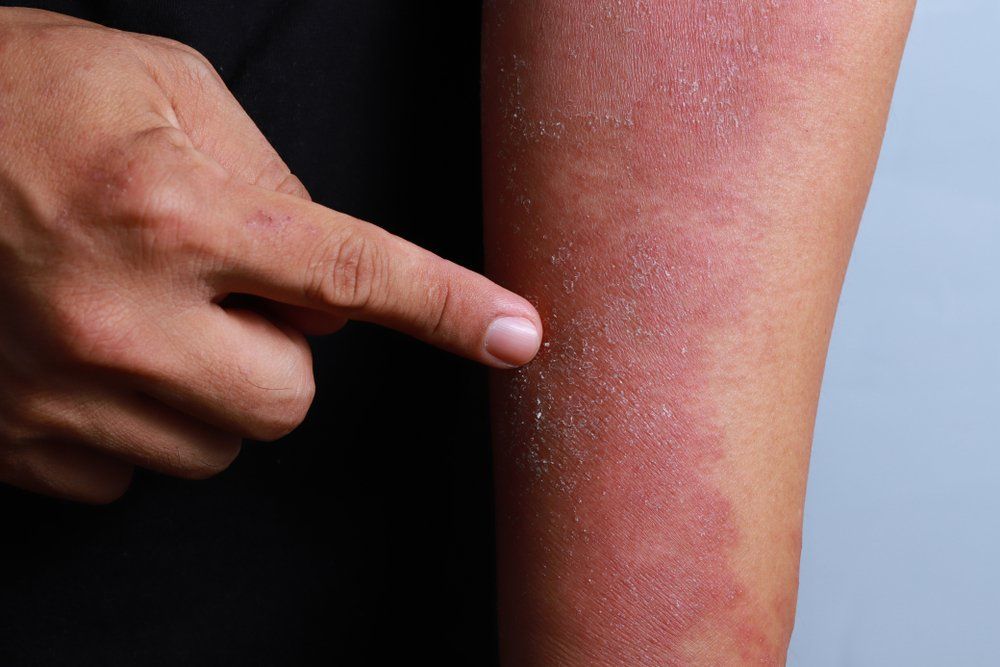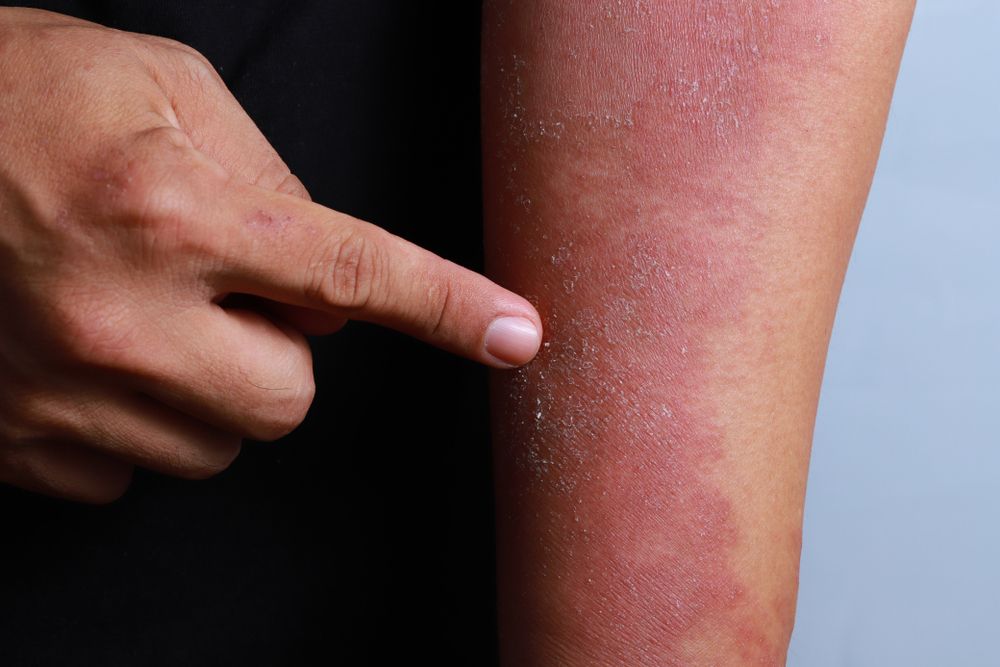- Case-Based Roundtable
- General Dermatology
- Eczema
- Chronic Hand Eczema
- Alopecia
- Aesthetics
- Vitiligo
- COVID-19
- Actinic Keratosis
- Precision Medicine and Biologics
- Rare Disease
- Wound Care
- Rosacea
- Psoriasis
- Psoriatic Arthritis
- Atopic Dermatitis
- Melasma
- NP and PA
- Skin Cancer
- Hidradenitis Suppurativa
- Drug Watch
- Pigmentary Disorders
- Acne
- Pediatric Dermatology
- Practice Management
- Prurigo Nodularis
- Buy-and-Bill
Article
Pattern distinguishes atopic, contact dermatitis
Author(s):
Part of the management of contact dermatitis is identifying the offending agent through patch testing and eliminating contact with the offending agent.
Computer gaming can represent a source of contact dermatitis, according to Mariam Abbas, M.D., a fourth-year dermatology resident and chief resident at the University of Alberta in Edmonton, Alberta, Canada.
Dr. Abbas presented data at the annual meeting of the Canadian Dermatology Association (CDA, June 2016, Saskatoon, Saskatchewan, Canada) during a sub-specialty meeting of the Canadian Contact Dermatitis Society. She described a case of localized dermatitis on the right forearm of a 12-year-old previously healthy boy who had no personal or family history of atopy.
The rash the boy presented with was not characteristic of atopic dermatitis, Dr. Abbas says.
"We know that atopic dermatitis has a certain pattern," Dr. Abbas says. "When the pattern is different, as it was in this case, you have to think outside the box about other possible causes."
In interviewing the patient and his mother, it was learned that the boy had had a reaction in the past to nickel. Clinicians also learned that a new desk had been purchased for the child in the winter of 2015 and that he had taken up playing a game on his computer in the summer of 2015.
"He complained of a burning sensation and itch," when in contact with his desk, Dr. Abbas notes. "The burning would dissipate into more of an itch."
The child had been to a family physician who prescribed topical corticosteroids to treat the rash and referred the child to a dermatologist. When seen by a dermatologist, the suspicion was contact dermatitis to metals.
"The boy's mother had sent us pictures of the desk, and given the temporal relationship, and we suspected the source of contact dermatitis to be the desk," Dr. Abbas says.
To confirm their suspicion, the dermatologists did patch testing for two haptens, nickel and cobalt. A small patch was applied to the boy's forearm, and Tegaderm®, which is waterproof, was used to cover the patch, so the patient could continue to play hockey and shower, explains Dr. Abbas.
"Typically in patch testing, you are not supposed to shower for four days," Dr. Abbas says. "In this case, the patient did not want to forego his hockey season games, therefore we used this form of patch testing."
This allowed the boy to play hockey and shower. In addition, dermatologists performed dimethylglyoxime test to the hardware of the boy's desk and to his belt buckle. The testing confirmed the nickel was the offending agent.
Part of the solution to the clearing of the boy's dermatitis was that he returned to school in the fall and decreased the amount of time he played computer games. The main solution, however, was placement of a second mousepad on top of the desk hardware that contains nickel.
"He cleared his dermatitis by avoiding direct contact with his desk hardware," says Dr. Abbas. "The boy had acquired nickel allergy, is sensitized, and is reacting to it."
The literature describes that newer technologies, such as the Xbox gaming controller and Macintosh laptop computers and iPhones have been added to the list of sources of nickel exposure that can trigger allergic contact dermatitis in pediatric patients. Pediatr Dermatol. 2014 Jan-Feb;31(1):115-6.
The computer mouse represents a potential source of contact dermatitis, Dr. Abbas says. In one case, prolonged use of a computer mouse resulted in frictional lichenified dermatosis. Dermatol Online J. 2010 Dec 15;16(12):3.
Other computer-related dermatological manifestations include the case of a women who developed erythema ab gine on the right thigh associated with ongoing use of her laptop computer and placement of it on her thighs. J CutanMed Surg. 2011 Nov-Dec;15(6):347-53.
The recommendation from the treating physicians in that case and similar cases is that dermatologists should advise patients to rest their laptop computers on solid surfaces.
Dr. Abbas notes computer accessories such as mouse pads and wrist rests/pads can also be sources of dermatitis, particularly since they often have rubber additives. "They also contain dyes, and we do panel testing for that," Dr. Abbas says.
Individuals who have carpal tunnel syndrome and wear supportive gear to manage the condition risk sensitization as well, Dr. Abbas adds.
Treatment for these cutaneous manifestations such as irritant contact dermatitis have largely involved topical steroids and emollients and avoidance of the suspected allergen/hapten.
Dr. Abbas reports no relevant disclosures.
1Jacob SE. Xbox--a source of nickel exposure in children. Pediatr Dermatol. 2014;31(1):115-6.
2Ghasri P, Feldman SR. Frictional lichenified dermatosis from prolonged use of a computer mouse: Case report and review of the literature of computer-related dermatoses. Dermatol Online J. 2010;16(12):3.
3Li K, Barankin B. Cutaneous manifestations of modern technology use. J Cutan Med Surg. 2011;15(6):






